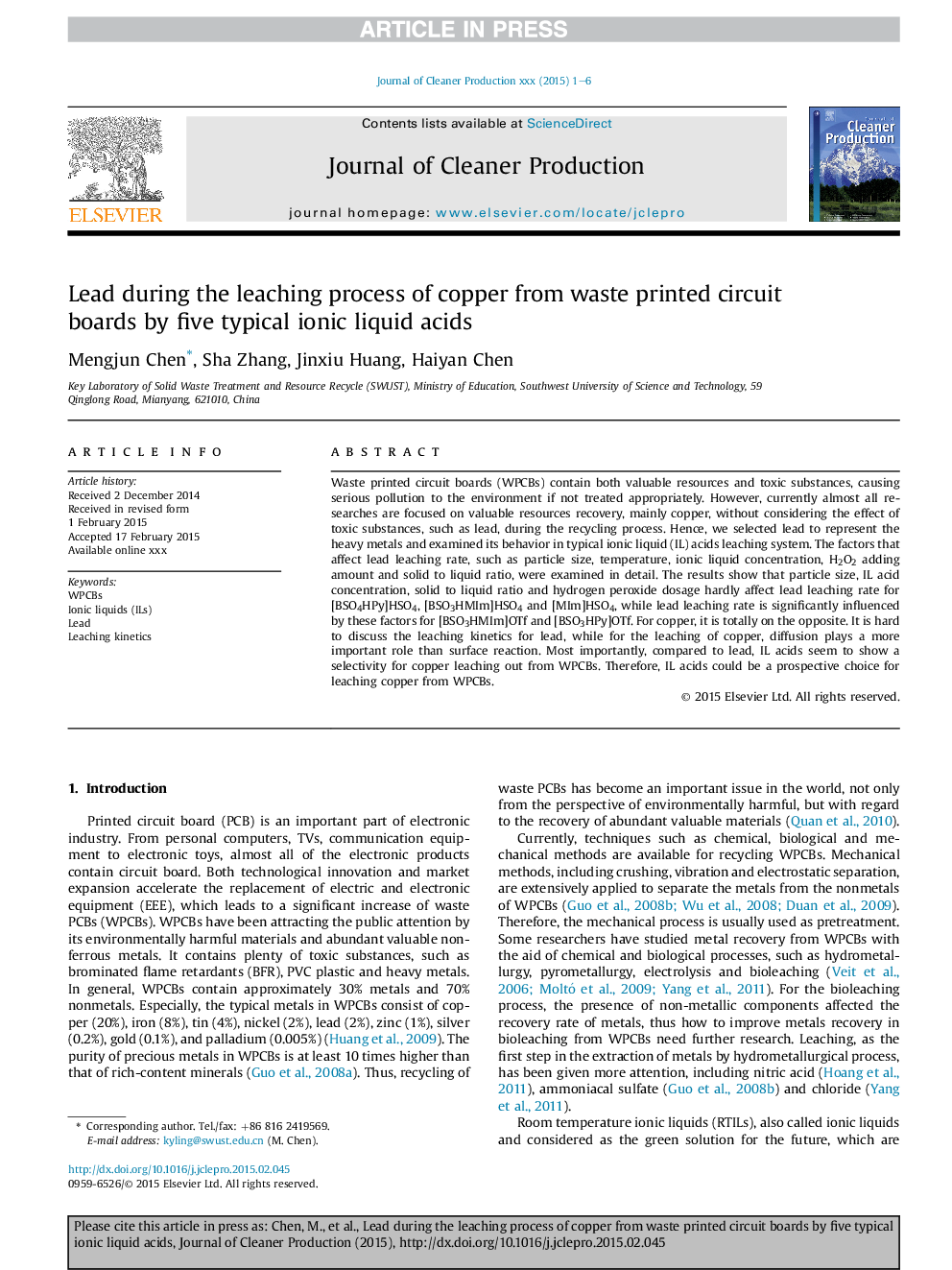| Article ID | Journal | Published Year | Pages | File Type |
|---|---|---|---|---|
| 8104594 | Journal of Cleaner Production | 2015 | 6 Pages |
Abstract
Waste printed circuit boards (WPCBs) contain both valuable resources and toxic substances, causing serious pollution to the environment if not treated appropriately. However, currently almost all researches are focused on valuable resources recovery, mainly copper, without considering the effect of toxic substances, such as lead, during the recycling process. Hence, we selected lead to represent the heavy metals and examined its behavior in typical ionic liquid (IL) acids leaching system. The factors that affect lead leaching rate, such as particle size, temperature, ionic liquid concentration, H2O2 adding amount and solid to liquid ratio, were examined in detail. The results show that particle size, IL acid concentration, solid to liquid ratio and hydrogen peroxide dosage hardly affect lead leaching rate for [BSO4HPy]HSO4, [BSO3HMIm]HSO4 and [MIm]HSO4, while lead leaching rate is significantly influenced by these factors for [BSO3HMIm]OTf and [BSO3HPy]OTf. For copper, it is totally on the opposite. It is hard to discuss the leaching kinetics for lead, while for the leaching of copper, diffusion plays a more important role than surface reaction. Most importantly, compared to lead, IL acids seem to show a selectivity for copper leaching out from WPCBs. Therefore, IL acids could be a prospective choice for leaching copper from WPCBs.
Related Topics
Physical Sciences and Engineering
Energy
Renewable Energy, Sustainability and the Environment
Authors
Mengjun Chen, Sha Zhang, Jinxiu Huang, Haiyan Chen,
